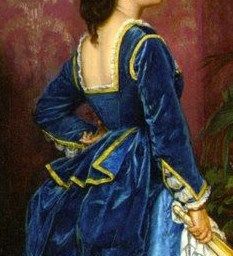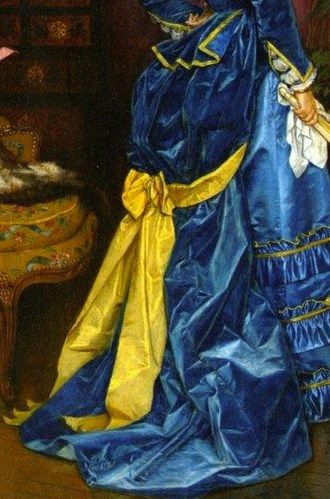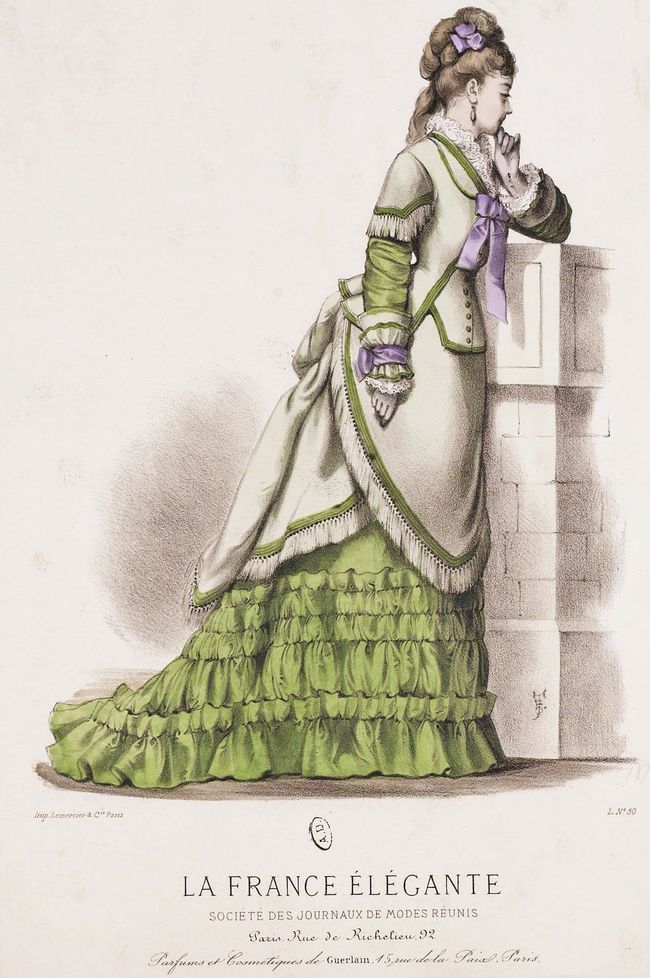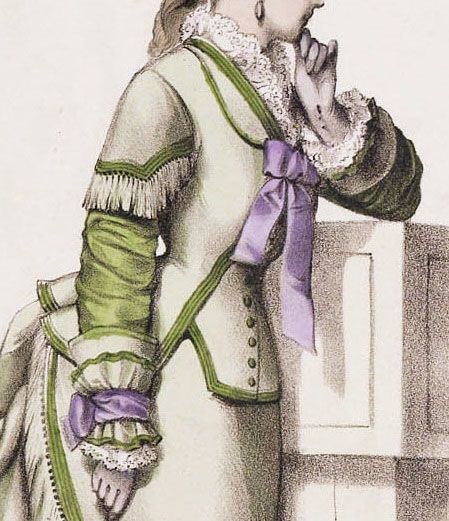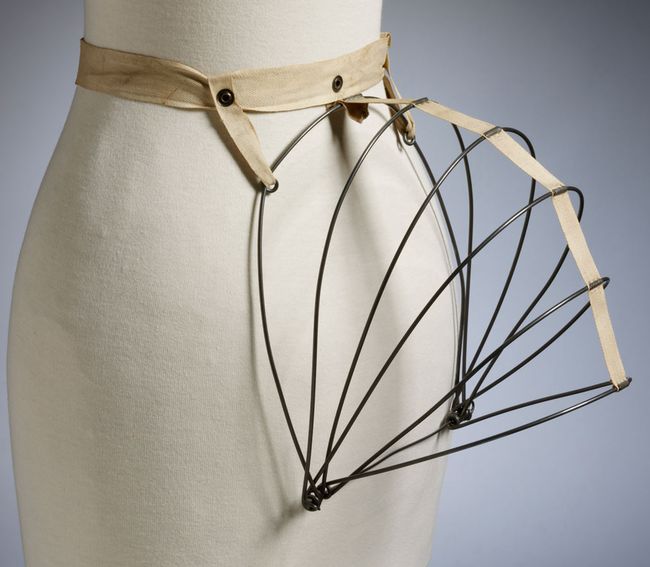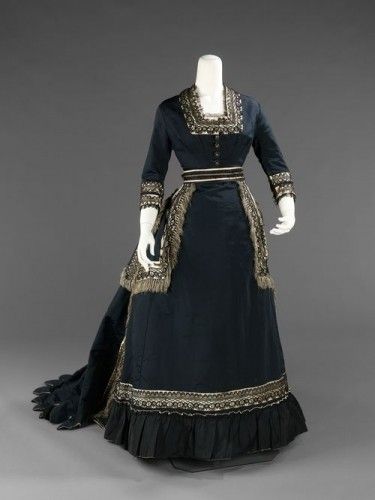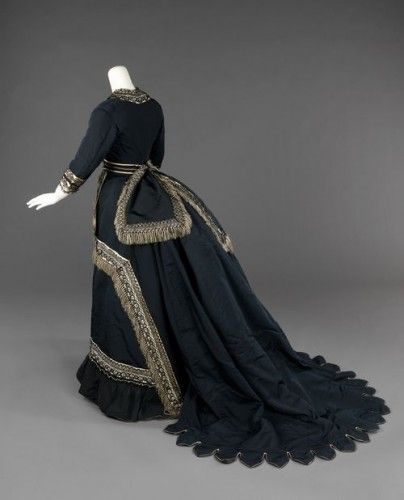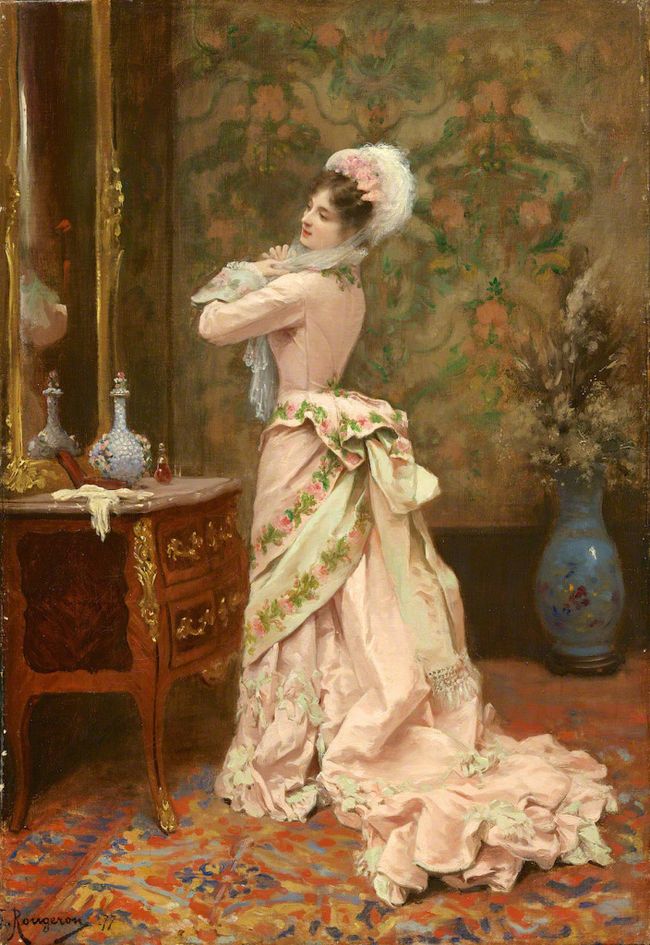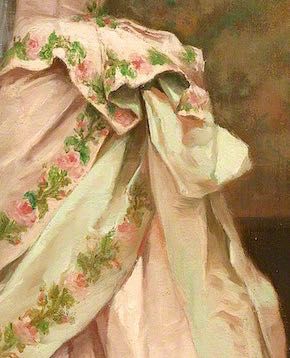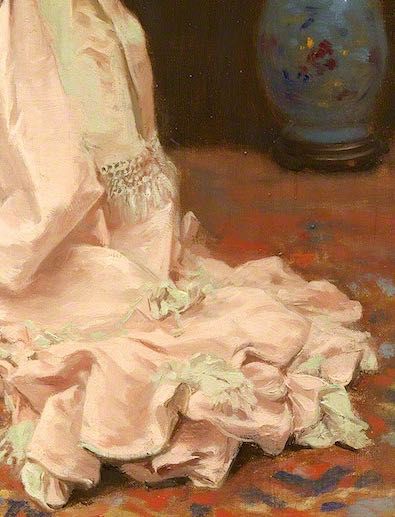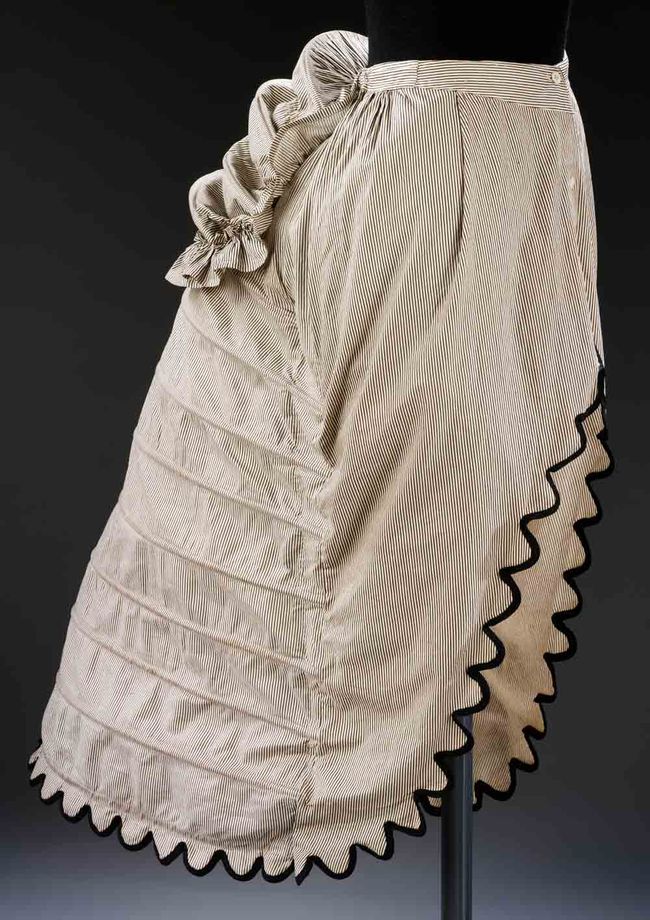1870 - 1879
SOFT BUSTLES AND FISHTAILS
Fashions by the 1870s were softer and more delicate, with pastel coloring and frivolous trimmings and decoration.
Bodice necklines were square, with exposed décolleté for evening.
Dresses had three-quarter-length sleeves with lace cuffs, or could be sleeveless for evening wear.
Aided by the sewing machine (now becoming a desirable acquisition for home use), fabric was draped and layered around the hips, creating an overskirt with apron and panniers that was supported in the small of the back by a straw or horsehair understructure, called a soft bustle.
By 1875 colors were deeper, a more streamlined shape was emerging, with a smoothly fitted bodice, and the waist and hips were more defined.
By 1876 dresses were shaped in a Princess line (with an all-in-one princess petticoat), often with a cuirass over bodice.
The upper fullness of earlier skirts had moved lower at the back, forming a fishtail train that was delightful to look at but complex to create and needed skill to manage.
SOFT BUSTLES
To support the fullness at the top of the skirt at the back, a framework known as a soft bustle was worn.
This could be made from a variety of materials, including meshed horsehair, wadding, and straw, or even improvised with scrunched-up newspaper.
The example shown comprises covered watch spring steel, half hoop cording for the lower skirt, moire fabric, and a wavy baited outline along the hem.
It fastens at the front of the body with buttons.
1870 - 1879年
柔软臀衬与鱼尾
十九世纪70年代的时尚更柔软更细腻,搭配柔和的色彩,轻浮的饰边与装饰。
上身领口是矩形的,晚上会将领口拉低。
礼服有七分袖带蕾丝的款式,也有无袖晚装的款式。
有了缝纫机的协助(当时已成为家庭使用的理想购置物),面料被立体裁剪并分层在臀部周围,创造了一种由罩裙和由稻草或马毛做底层支撑的裙撑框架组合起来的款式,称之为柔软臀衬。
1875年的色系越来越深,外形越来越流畅,剪裁合身,腰部与臀部也更加凸显。
1876年的礼服开始靠公主线塑造外形(里部搭配一体式的公主衬裙)。
早期裙装臀部丰满,后背下部移动较为缓慢,形成一条长长鱼尾后摆,外观看来起来非常迷人但是制作复杂并且需要一定技巧来驾驭。
臀部衬垫
为了支撑裙装后背顶部的丰满感觉,人们佩戴一种被称之为臀衬的笨拙框架。
它可以由各种材料制作而成,包括尺状马毛,稻草,各种填充物,甚至还有将报纸揉成一团的。
图例所示的裙衬包括弹簧钢,用于裙摆边缘的半环箍,波纹织物以及下摆的波浪轮廓。
它以纽扣固定在身体前面。

